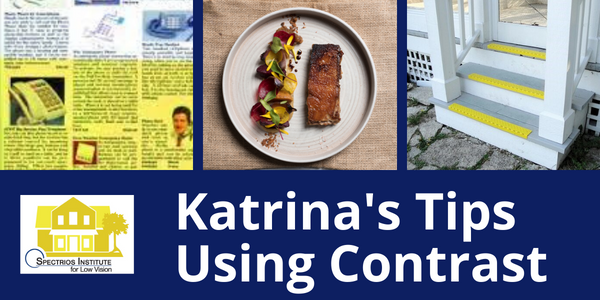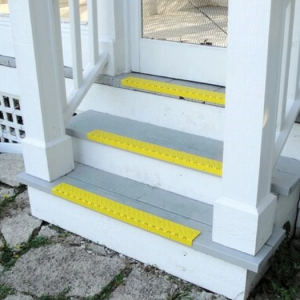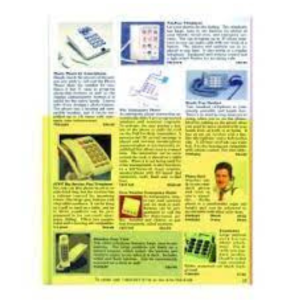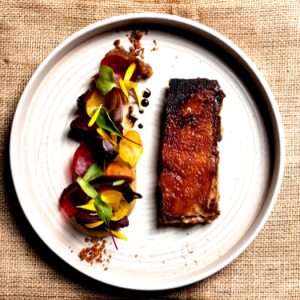
Katrina’s Tips – Using Contrast
In the article Contrast Sensitivity by Dr. Park we shared three scenarios about John, Mary and Lisa. Here are some tips to address their specific contrast difficulties.
Issues with Tripping
 First consider John and his recent difficulty with curbs and stairs. The most accessible community environments, crosswalks, doctor’s office, store entrances, and restaurants have painted curbs in a high contrast shade of yellow. This universal accessibility standard is intended to alert individuals to the presence of a curb in order to prepare for a step up or down. Stairs, in a home environment, can be adapted to feature improved contrast in order to help John feel safer and more comfortable. For exterior concrete stairs, John and his family could consider painting the edge of the stairs with a high contrast dark grit paint. Alternatively, both interior and exterior stairs can be adapted with high contrast black and yellow tape, a less permanent solution.
First consider John and his recent difficulty with curbs and stairs. The most accessible community environments, crosswalks, doctor’s office, store entrances, and restaurants have painted curbs in a high contrast shade of yellow. This universal accessibility standard is intended to alert individuals to the presence of a curb in order to prepare for a step up or down. Stairs, in a home environment, can be adapted to feature improved contrast in order to help John feel safer and more comfortable. For exterior concrete stairs, John and his family could consider painting the edge of the stairs with a high contrast dark grit paint. Alternatively, both interior and exterior stairs can be adapted with high contrast black and yellow tape, a less permanent solution.
 Difficulty Reading
Difficulty Reading
Mary’s scenario, with difficulty reading newspaper and cooking instructions, is a common concern for Spectrios patients. The newspaper is difficult to read due to the size of the print, but also because of the contrast. Newspaper print is commonly described as gray on gray, and features some of the worst contrast of any printed material. Its only major rival is food label cooking instructions. Newspaper readers with a computer, tablet, or smartphone should consider switching to the E-newspaper. The electronic newspaper displays with excellent contrast, black on white, and has the added bonus of being able to zoom in to make the print larger also. When reading glasses assist in reading newspaper or food label size print, something as simple as a sheet of yellow acetate placed against the print can improve the contrast.
Trouble Seeing Food on a Plate and Viewing the Television

Lisa’s case, with trouble seeing her food, has one of the easiest strategies yet. A small investment in at least one set of dark and one set of white tableware provides a choice of the best contrast background for various food. A meal of chicken, mashed potatoes, and cauliflower is best eaten on a black plate. While a meal of steak, green beans, and beets is best eaten from a white plate. Dark coffee is best in a white mug, while oatmeal is best in a dark bowl.
For watching TV, television settings can always be adjusted to improve contrast or feature a vivid display. If that doesn’t do the trick, then consideration of enabling audio description settings is recommended. With audio description, television scenes are described by a background narrator whenever there isn’t dialogue on screen.
If you need help creating a high contrast environment, set up a an appointment with Katrina by calling 630-690-7115.
